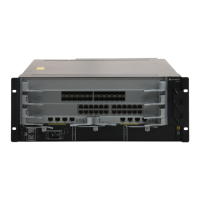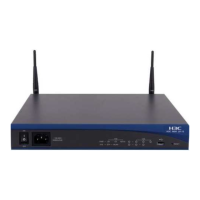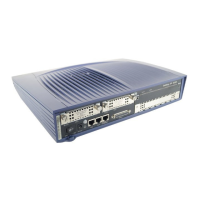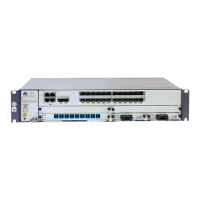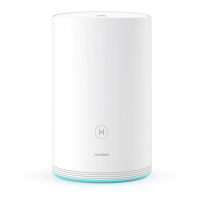Command Manual - Routing Protocol
Quidway S6500 Series Ethernet Switches Chapter 4 Integrated IS-IS Configuration Commands
Huawei Technologies Proprietary
4-32
Description
Using silent-interface command, you can disable a specified interface to transmit
IS-IS packet. Using undo silent-interface command, you can enable the interface to
transmit IS-IS packet.
By default, all the interface are allowed to transmit/receive IS-IS packets.
The silent-interface command is only used to suppress the packets to be transmitted
on the interface, but the routes of this interface will still be transmitted from other
interfaces.
Example
# Prohibit the IS-IS packets to be transmitted via Interface Vlan-interface 3.
[Quidway-isis] silent-interface Vlan-interface 3
4.1.39 spf-delay-interval
Syntax
spf-delay-interval number
undo spf-delay-interval
View
IS-IS view
Parameter
number: Specify number of routes to process before releasing CPU. It is in unit of piece
with the range from 1000 to 50000. By default, the value is 5000 pieces.
Description
Using spf-delay-interval command, you can configure number of routes to process
before releasing CPU in the SPF calculation. Using undo spf-delay-interval command,
you can restore the default setting.
When there are a large number of routes in the routing table, this command can be
used to set that CPU resources are released automatically after a certain number of
routes are processed. The unprocessed routes will be processed in one second. In this
way, SPF calculation will not occupy the system resources for a long time, which has
impact on the responding speed of the console.
The value of the parameter number can be adjusted according to the capacity of the
routing table. If the spf-slice-size command is also configured, the SPF calculation will
be paused when any setting item is met.
By default, CPU is released once when every 5000 pieces of routes are processed.
For the related commands, see spf-slice-size.
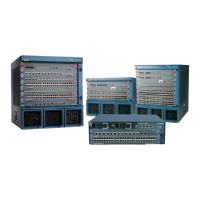
